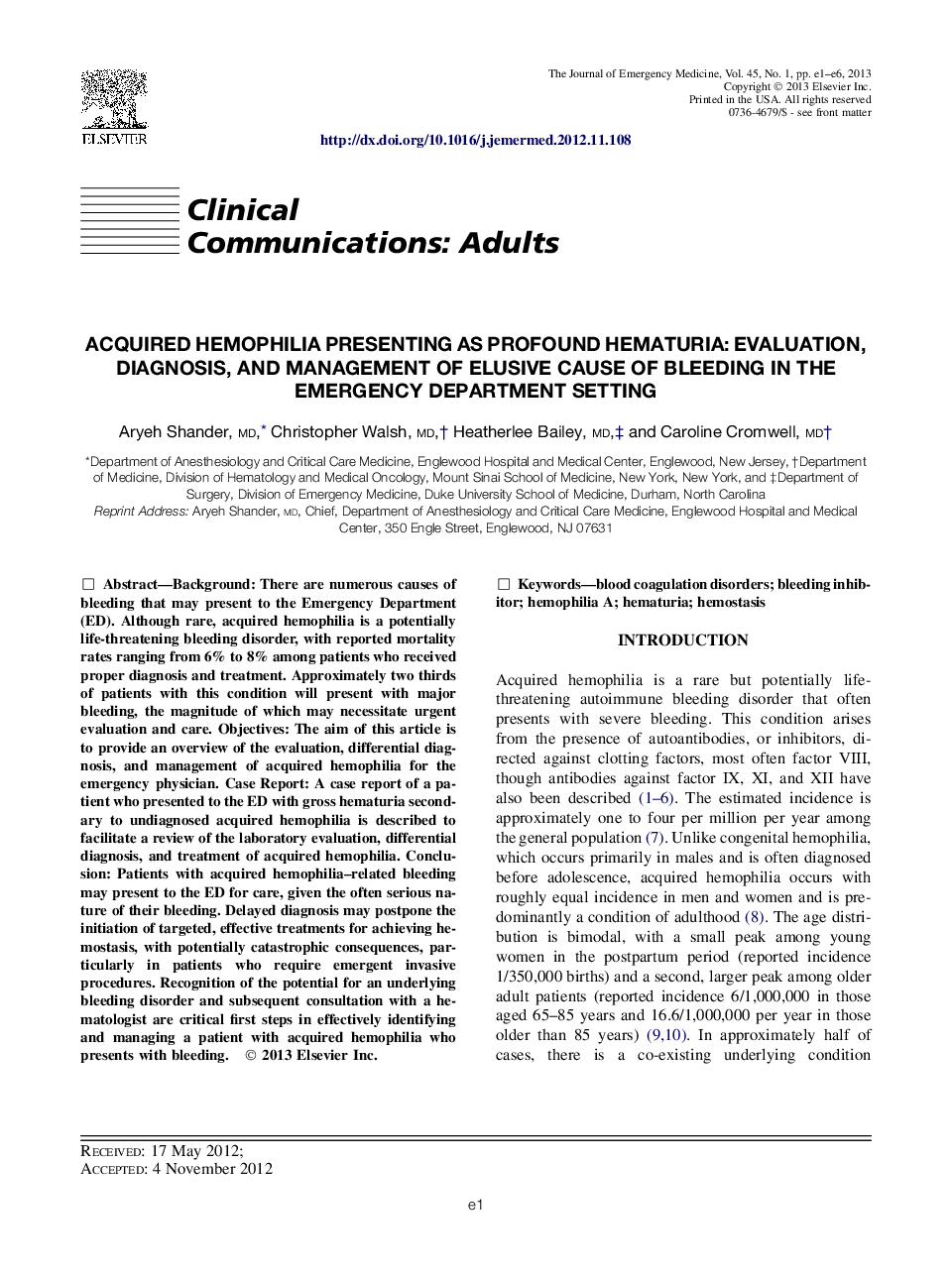| کد مقاله | کد نشریه | سال انتشار | مقاله انگلیسی | نسخه تمام متن |
|---|---|---|---|---|
| 3248134 | 1589147 | 2013 | 6 صفحه PDF | دانلود رایگان |

BackgroundThere are numerous causes of bleeding that may present to the Emergency Department (ED). Although rare, acquired hemophilia is a potentially life-threatening bleeding disorder, with reported mortality rates ranging from 6% to 8% among patients who received proper diagnosis and treatment. Approximately two thirds of patients with this condition will present with major bleeding, the magnitude of which may necessitate urgent evaluation and care.ObjectivesThe aim of this article is to provide an overview of the evaluation, differential diagnosis, and management of acquired hemophilia for the emergency physician.Case ReportA case report of a patient who presented to the ED with gross hematuria secondary to undiagnosed acquired hemophilia is described to facilitate a review of the laboratory evaluation, differential diagnosis, and treatment of acquired hemophilia.ConclusionPatients with acquired hemophilia–related bleeding may present to the ED for care, given the often serious nature of their bleeding. Delayed diagnosis may postpone the initiation of targeted, effective treatments for achieving hemostasis, with potentially catastrophic consequences, particularly in patients who require emergent invasive procedures. Recognition of the potential for an underlying bleeding disorder and subsequent consultation with a hematologist are critical first steps in effectively identifying and managing a patient with acquired hemophilia who presents with bleeding.
Journal: The Journal of Emergency Medicine - Volume 45, Issue 1, July 2013, Pages e1–e6